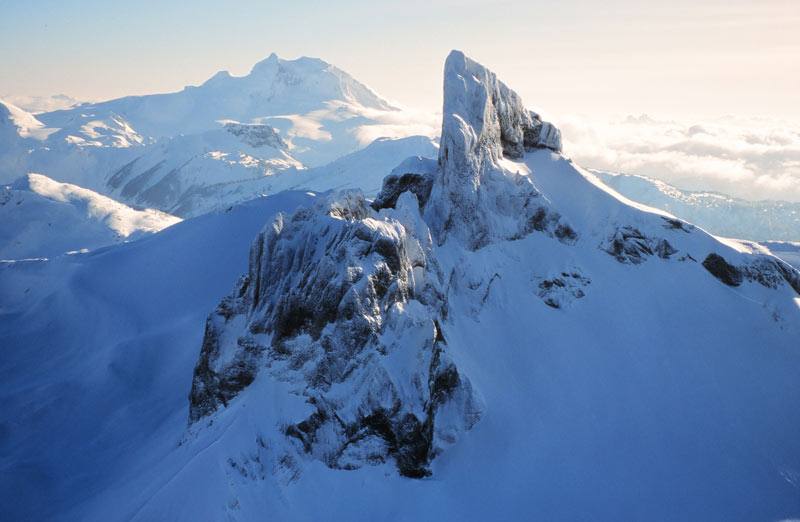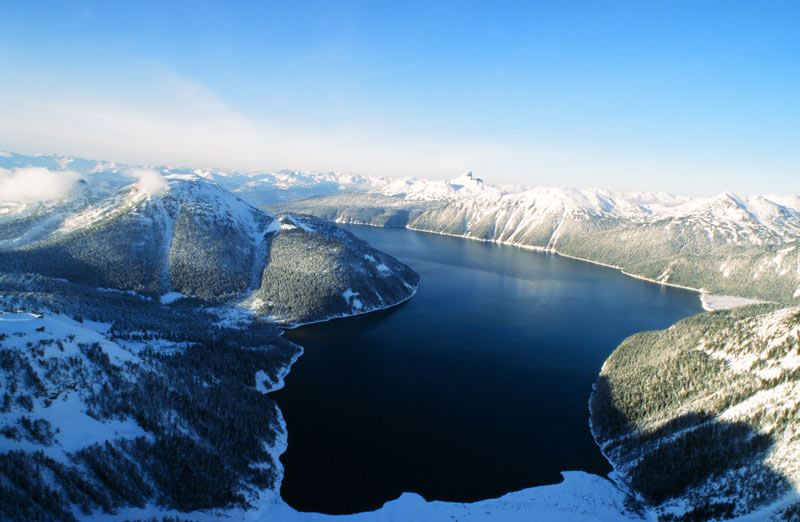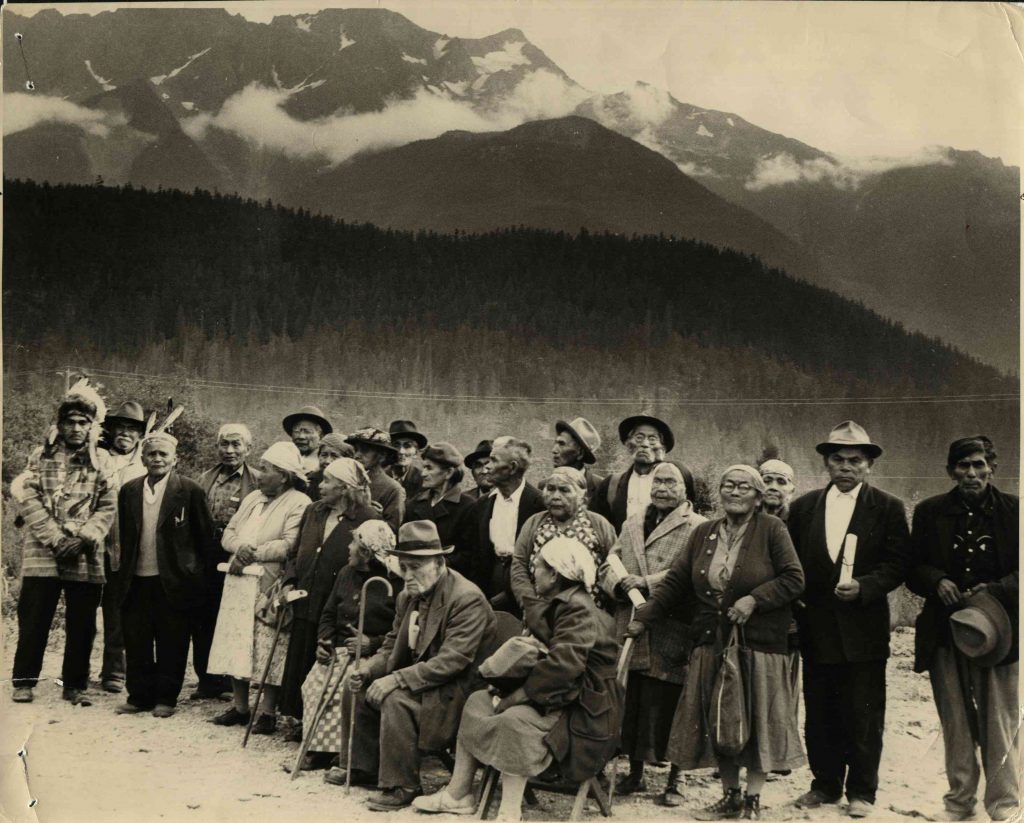
The Squamish Lil’wat Cultural Centre showcases the two First Nations communities that lived in the Whistler area.
Sk̲wx̲wú7mesh Úxumixw in English is the people of the Squamish villages there was no word for Nation.
L̓il̓wat7úl are the real or true Lil’wat, they adopted this name when the newcomers came into their territory and mistook them for their cousins that live around Lillooet, BC.
Both the Sk̲wx̲wú7mesh and L̓il̓wat7úl are care takers of the land their culture is a reflection of it. Their history is tied to the rivers, lakes and mountains, when we give directions we reference them.
Many First Nations communities including the Squamish and Lil’wat Nations were oral societies. The Squamish and Lil’wat created written languages in the 1970’s.
Storytellers had the immense and important role of being historians for their community. Both nations have real or true stories based on major events or people that were pivotal to them. They also have myths or legends that were used to teach their morals and values to their children.
Each community chose and trained their storytellers in their own way, repetition was a key tool. Unfortunately when the flu and small pox epidemic decimated their communities many stories were lost. Also from 1881-1949 children were forcibly removed from their parent’s homes and sent to residential schools. Even more stories were lost or altered.
We are very fortunate to retain the most important stories to our communities. The following stories are important to our communities including the Resort Municipality of Whistler.
The story of our Ancestors begins with Ts̓ek̲ánchtn a man who lived in Chk̲ẃelhp (near Gibson’s, BC) where he and his wife raised a family. After many years he heard a loud noise and discovered a man named Sx̲eláltn dancing Sx̲waýxwey (a ceremonial rite) on his roof. He was invited down but Sx̲eláltn continued to dance until the ceremony was complete. These two men (brothers) eventually parted ways and Sx̲eláltn formed a second village across the creek at Schenk̲ where he raised his own family. They survived on the riches of the sea and forest. Their descendants would spread over the land, across the water to Vancouver Island and up and down the coast.
We are the people of the Srap7úl, the “real tree” which is the Douglas fir-The tree that grows the highest. Original burials of our people were done in this fir tree. When it grows to its fullest, our Ancestors believed they are closer to the Creator. Srap7úl was our original name, but newcomers referred to us as Lillooet because we came from “The Lillooet Tribe of Indians.” Today we are known as L̓il̓wat7úl.
Spo7ez was a village shared by the Squamish and Lil’wat Nation at the confluence of Rubble Creek and the Cheakamus River at Function Junction in Whistler. For many years the members of both nations lived peacefully engaging in trade and commerce. Over time the villagers began to disrespect one another and the Thunderbird decided to take action. He flapped his wings causing a volcano to erupt and a massive rockslide that buried the ancient village of Spo7ez under a hundred meters of rock debris. Hundreds were killed instantly as the massive rockslide swept down the mountainside to the ocean. The survivors were sent home with a message, that we’re friends, family and neighbors and we need to work together.
This story is still told today, and is evidence of our longstanding relationship with each other and a reminder of the importance of cooperation and a peaceful coexistence.
Black Tusk is estimated to have erupted in the late Pleistocene Period, 20 thousand years before present to early Holocene Period 1807 thousand years before present.
After the Thunderbird caused the volcano to erupt at Black Tusk both communities were told they could only have seasonal camps in the Whistler area. They were told that as you came into the valley and could see Black Tusk that would be the beginning of the shared territory.
Our families came into Whistler during the warmer months to harvest the flora and fauna for food and medicines. They would also go hunting and set up traps for the different animals that live here. Whistler is the home to the hoary marmot, they whistle to alert others to possible danger. Whistler was renamed after them to give the town more marketability. It used to be called Alta Lake.
In the backyard of the Squamish Lil’wat Cultural Centre is evidence of an Istken-Pithouse used by the Wolf Clan or the Wallace Family. Many other families had camps around Green Lake.

Black Tusk with Mt. Garibaldi in Background
Photo Credits: Gary Fiegehen

Garibaldi Lake West with Black Tusk
Photo Credit: Gary Fiegehen

Mt Currie Elders
On March 22, 2001 the Sk̲wx̲u7mesh Úxumixw and L̓il̓wat7úl signed a historic protocol. They formally agree once again to live and work together in Whistler, BC.
The Sk̲wx̲wú7mesh Úxwumixw, the Squamish People are the descendants of the Coast Salish First Nations People that lived in present day Greater Vancouver, Gibson’s landing and Squamish, BC. Their territory is 6732 square kilometers. There are about 4,000 members of the Squamish Nation. They speak Sk̲wx̲wú7mesh Snichem, the number of fluent speakers is extremely low but they are aggressive in bringing back to their youth. Their majority of their territory is found along the ocean. Their clothing, food, housing and transportation has adapted to the temperate rainforest.
| Fish | Seaweed |
| Shell Fish | Berries |
| Deer | Geese |
The L̓il̓wat7úl are Ucwalmícw which translates to “the people of the land”, they are 1 of 11 communities that form the Státimc Nation. Our territory extends to Rubble Creek, north to Gates Lake, East to Upper Stein Valley and west to the coastal inlets of the Pacific Ocean an area covering 7911.31 square kilometers. There are about 2,500 members of the Lil’wat Nation. They speak Ucwalmícwts which translates to “the language of the land.” They are a mountain community; their territory is similar to what you see in Whistler. Their clothing, food, housing and transportation has adapted to the temperature change found in the mountain ranges.
| Fish | Geese |
| Deer | Berries |
| Game | Plants |
Knowledgeable Cultural Ambassadors share their cultural teachings with guests during guided tours; visit our Group Tours page for more information.
Discover our unique style of modern First Nation’s cuisine such as bannock, salmon and venison. Visit the Thunderbird Café.
Discover our unique selection of First Nations merchandise ranging from handcrafted works of art, to home accents, clothing and accessories, jewellery, pottery, baskets, books and souvenir merchandise. Visit the Gallery & Gift Shop.
Weddings at the SLCC are some of the most spectacular; learn more about our venue as your wedding location by visiting slcc.ca/weddings.